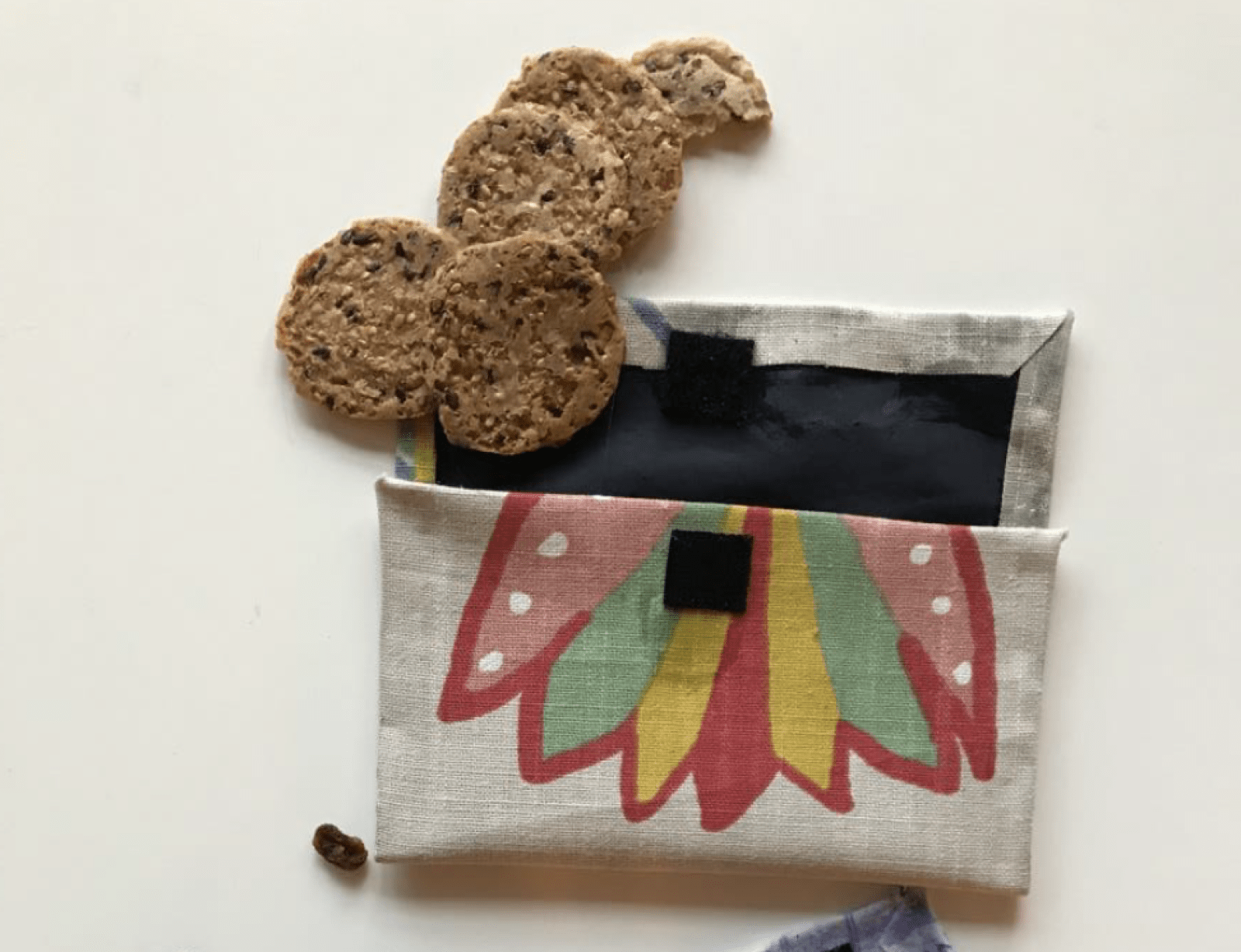
Overview
Make a reusable snack bag with recycled materials and fabric glue. Replace your plastic bags and reduce the plastic waste.
Instructions
What you'll need
- “Reusable snack bag” instructional slideshow
- Supplies per class:
- Fabric scissors
- Ruler
- Fabric glue - about 200 ml bottle per class.
- Paint brushes
- Provide small dishes of glue and paintbrushes to each student group of 3-4 students
- Old newspaper to cover each desk and protect them from the glue
- Supplies per student:
- 1 piece of vinyl or recycled material (e.g. broken umbrella), size can vary, but suggested size is 15 cm x 23 cm
- 1 piece of used fabric (e.g. old t-shirts or jeans), cut 2.5 cm longer than vinyl. 17.5 cm x 25.5 cm suggested size
- 1-2 small pieces of Velcro
Reusable snack bag
- Before class, review the “Reusable snack bag” instructional slideshow to learn the steps to make a reusable snack bag.
- When you're ready, lead a class discussion about how to reduce waste when it comes to their snacks and lunch. Ask the students to share what snacks they could bring that don't use packaging or create waste like apples, bananas and oranges. Discuss with the students how they could bring snacks to school and avoid creating waste like putting carrot sticks and crackers in reusable containers.
- Explain to your students that they'll be making a reusable bag for their snacks. This can replace plastic bags that end up in the landfill. Start by covering the desks with newspaper and distributing craft supplies.
- You may want to ask a few parent volunteers or older students to help with this activity.
- Help students create their own reusable bags using the instructions from the slideshow.
- Remind the students to waste less and save materials, water and energy for the things we really need.
Modify or extend this activity
Extensions
- Plan a class zero waste lunch. Document your success with photos and challenge other classes in the school to go zero waste at lunch.
Curriculum Fit
Kindergarten Social Studies
Content
- Needs and wants of individuals and families
Curricular competencies
- Use Social Studies inquiry processes and skills to ask questions; gather, interpret, and analyze ideas; and communicate findings and decisions
Kindergarten Applied Design, Skills, and Technologies
Curricular competencies
Applied design - Making
- Make a product using known procedures or through modelling of others.
Applied skills
- Use materials, tools, and technologies in a safe manner in both physical and digital environments.
Assessments
- Assess students’ ability to follow instructions to make a snack bag.
- Assess students’ ability to work effectively as individuals to make the craft.
- Assess students’ understanding of why we want to create less waste and how this snack bag helps.
Teaching Notes
Need-less waste
All living things have basic needs like air, water, food, clothing, shelter, love and acceptance, safety and education. However, it’s important to understand that needs are different from wants. Many things we want in our lives are not needs but luxuries and the impact of ‘many wants’ is significant. Only using and buying what we need is beneficial in many ways:
- We waste less resources, energy and water if we buy few luxury items. Saving resources, energy and water means fewer burdens on our planet.
- We can share the resources, energy and water with others on our planet.
- We can create lending libraries for things like books, tools and equipment so we can own less, have access to more and build a sense of community.
- We have less clutter which makes us focus on the things that matter like spending time with family and friends.
- Less clutter helps us to quickly and easily tidy up our space.
- We can find things easier which gives us more time to play.
- We save money which can be used to do fun things with family and friends.
- We send less stuff to landfill which takes up space and/or recycling, which uses a lot of energy and water.







